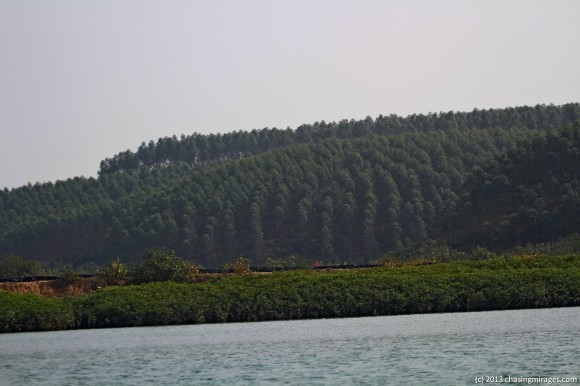All of you capitalist pigs out there may have noticed The Economist‘s issue on biodiversity last week. While I appreciate the attempt to present biodiversity conservation in a generally positive light to an audience that rarely prioritizes the issue, I think it is important to point out that The Economist misses its mark – by a wide margin.
Thanks to the leadership of one of my classmates (also a long-lost cousin), our grad student cohort recently submitted a collective Letter to the Editor. I’ll let you know if that gets printed. In the meantime, here’s my own initial, personal response.
Factual Criticisms
“Where eagles dareâ€
“China created its first national park in 1982; it now has 1,865 of them, covering 110m hectares, three times the area of America’s parks (though since the level and nature of protection afforded by national parks differs between countries, they are not strictly comparable)â€
This parenthetical is far more important than its parent sentence. I lived on a “national park†in China for over a year and witnessed the wanton clearing of forest, construction of large structures and replacement of natural vegetation with crops squarely within well-defined park boundaries. “Protected†in China does not mean protected. It just means that the land area can enter a government statistic.
“The long viewâ€
“That is why China, having destroyed so much of its forest, is now paying its farmers to plant trees. The ecological value of some of the resulting forest is open to doubt—a lot of it is monoculture of imported varieties that do not always suit the local climate—but the numbers are impressive. Forest cover increased by a third between 1990 and 2010.â€
In terms of maintaining biodiversity or providing ecosystem services such as soil retention, China’s monoculture forests are little better than barren mountainsides, and in many cases the economic attraction of monoculture has caused the destruction of natural forests and traditional agriculture that had been cultivated sustainably for hundreds of years.
This article assumes that environmental destruction can be reversed after societies realize what they’ve done. This is not true in many past cases (e.g. Superfund sites in the U.S.) and is even less likely to be true in a place like China where the speed and scope of destruction is unprecedented in human history.  When species go extinct, they’re gone forever. In many cases, toxic runoff from abandoned mines will pollute surrounding areas indefinitely. Topsoil lost to erosion and toxic leaching is replaced on geological timescales. It will be impossible to use the wealth gained from growth to restore the ecosystems that growth has destroyed. And because functioning ecosystems are rarer now than ever before, so rare that we could easily destroy them all within decades, we must find a new path of progress. We can no longer afford to destroy now and worry about the consequences later.
Conceptual Criticisms
The Special Report makes a classic logical error in its claim that economic growth results in more protection for biodiversity. All of the anecdotes point to a correlation between the two, but there is little evidence of causation. Oddly, parts of the Special Report are internally inconsistent, directly conflicting with its conclusion.
For example, “What’s the use?†states “But the prosperity that the growth created also gave people more freedom to think about things beyond their material welfare.â€
My conclusion from this sentence: we should pursue policies that provide people with a basic level of material welfare so that they have the time and freedom to do more “noble†things such as conserving biodiversity. This is a very different focus from growth for the sake of growth, or economic growth up to indeterminate levels. Beyond a level of material wealth that provides for the necessities of life, the utility of further growth declines precipitously.  We should work on allocating current wealth so that more people around the world have their basic material needs met rather than pursuing infinite growth for the already wealthy.
“Hearts and minds†illustrates a perfect example of why education rather than growth is the key to conservation.  Wealthy Chinese have reignited the market for ivory. This is only one example of China’s newfound wealth as a driver of biodiversity destruction, and it happens because so many wealthy Chinese are undereducated on issues of ecology and social responsibility. Education does not necessarily follow growth. There’s more evidence and a much more articulate causal link for the assertion that growth follows education.
As the Special Report ostensibly rejects but also awkwardly implies, growth on its own is not responsible for advances in biodiversity conservation. Instead, more direct factors are education and the freedom to pursue goals beyond basic survival. Although a certain level of material wealth is required for these two factors to exist, indefinite growth is not necessary. Rather than growth, humanity’s focus should be the equitable provision of education and basic material needs to a larger number of people in the world.

Leave a Reply